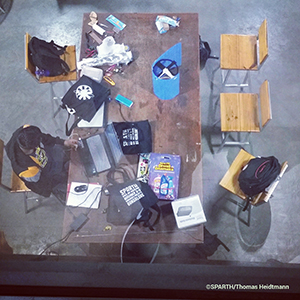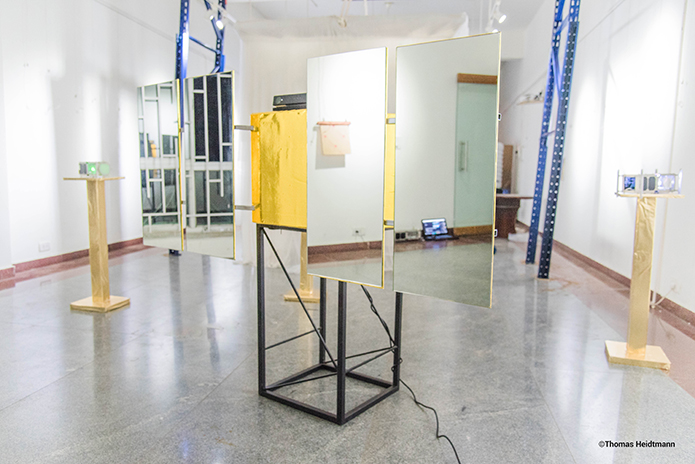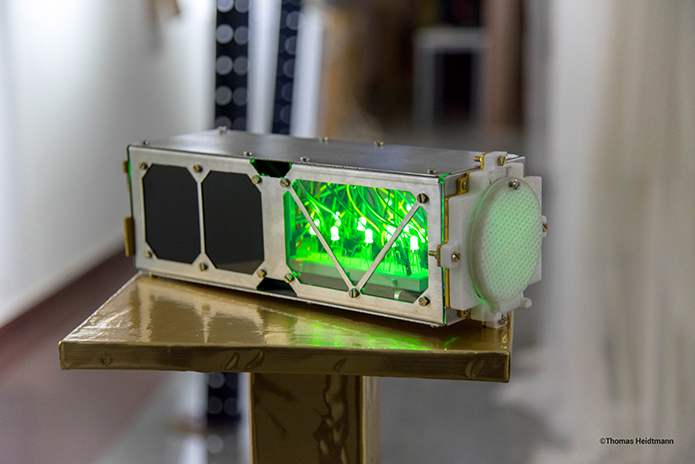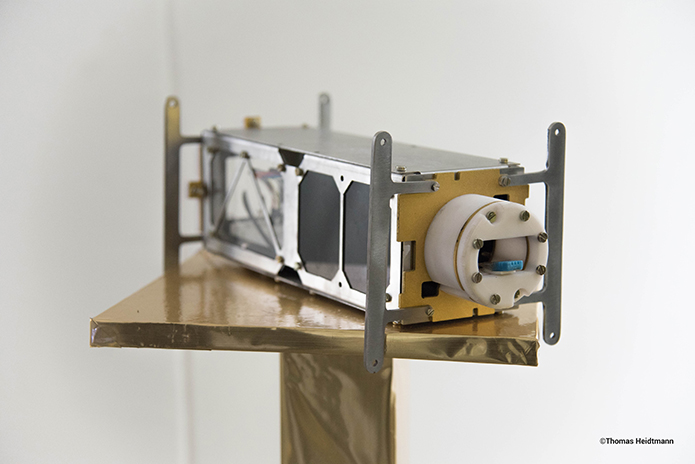Thomas Heidtmann
bangaloREsident@SRISHTI
Satellites, Space, SPARTH!
Thomas Heidtmann is a media artist whose quest involves material for satellite-inspired interactive objects that communicate with each other and the visitor in an exhibition setup, using light, sound, sensors, projections, and augmented reality. In Bangalore he also plans to organise a space-art hackathon: SPARTH.
Thomas Heidtmann is a media artist, formally educated at the Berlin University of the Arts with an emphasis on painting and new media. In his recent works, he examines forms and expressions of exploration, collaboration, and communication. He is fascinated by space technologies, mirrors, and questions of visibility and observation.
Heidtmann combines traditional aesthetics, materials, and techniques with new technologies such as 3D-printing to create installations and objects that are often interactive and engaging. The interactions vary from the more obvious to the arcane. He builds ephemeral solutions for site-specific requirements, as well as autonomous pieces.
He is co-founder and board member of Lacuna Lab e.V., an artist-run association, collaborative community, and space in Kreuzberg, Berlin, working at the intersection of arts, science, and technology. He also is co-organiser of Science Hack Day Berlin.
His works were presented among others at ISEA in Hong Kong, Vorspiel / transmediale & CTM and Retune Festival Berlin. He was involved in projects at Nationalgalerie im Hamburger Bahnhof, Museum für Gegenwart – Berlin and Fundació Joan Miró in Barcelona, Spain, and has lectured, at Martin-Gropius-Bau Berlin, among others.
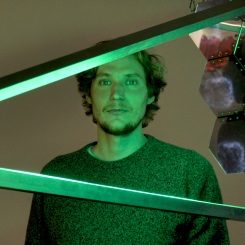 © Kristina Paustian
© Kristina Paustian
The eight-week long bangaloREsidency at Srishti Institute of Art, Design and Technology, starting from September 3rd, is the initial phase of the long-term project PLACE IN ORBIT*.
For the next two years, it will unite investigative artistic practices and modern collaboration processes with space exploration and technologies. It is an examination of the unique methods, shapes, and tools of our time that occurred with the invention of space rockets and satellites.
For his artistic research during the bangaloREsidency of the Goethe-Institut / Max Mueller Bhavan, Thomas Heidtmann plans to visit the space science facilities located around Bangalore. He wants to study materials, shapes, and processes used in the production and development of space satellites.
Additionally, he will interview engineers, scientists and other people working for the Indian space industry to learn more about the specific characteristics of the Indian approach to space exploration.
The aim is to collect material for satellite-inspired interactive objects that communicate with each other and the visitor in an exhibition setup, using light, sound, sensors, projections, and augmented reality.
His idea also includes connecting the local art scene and space industry in Bangalore through SPARTH – a space art hackathon where people from different professions come together and collaboratively work on (space) art projects. For more information: SPARTH


